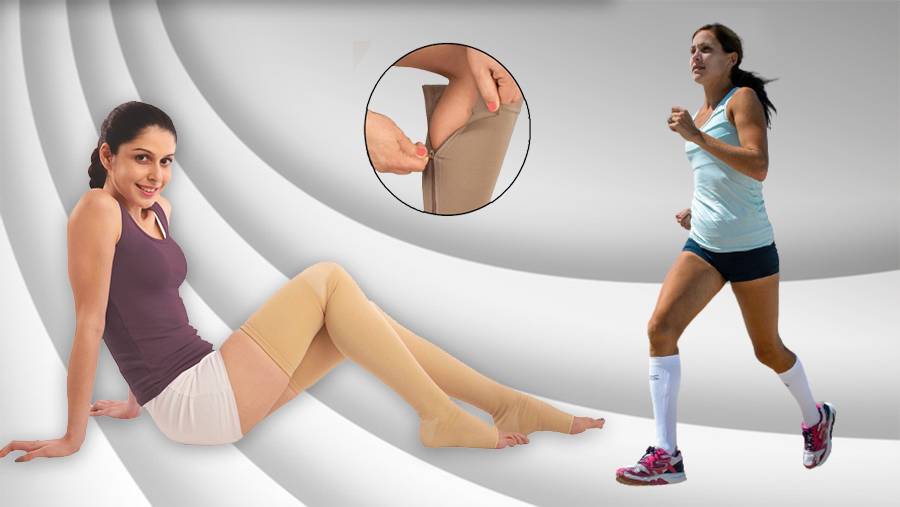
Hello
Select Address

Your medical practitioner might have simply prescribed a pair of waist-high compression stockings for your DVT or dysautonomia symptoms. You will now be vexed with the job of deciding upon which category of stockings to chose for yourself! In simple words, DVT is deep vein thrombosis and dysautonomia is a non-functioning of the nerves that control the involuntary actions of the body such as heart rate, blood pressure, perspiration, etc.
Both the diseases and many other conditions might interfere with the venous and lymphatic system of your legs. Compression stockings are medicated products that come to the rescue in the event of these physical ailments. Here are 5 FAQs on compression stockings that will let you learn more about them.
What are the symptoms that call for their use?
The common ailments that usually drive doctors to advise compression stockings for their patients are deep vein thrombosis, varicose veins (of the legs), blood pooling in the legs, POTS symptoms (Postural Orthostatic tachycardia Syndrome) or ankle sprain. Medical compression stockings can also help deal with dysautonomia symptoms, low blood pressure, tachycardia, lightheadedness or muscle pain caused by blood pooling in the legs. Individuals required to stand throughout their working hours are usually advised to use them before DVT or varicose vein symptoms set in!
What is the compression level that they exert on the legs?
Generally, medicated compression stockings are developed using advanced compression technology and quality checked for excellent results. They are manufactured to exert maximum pressure near the ankle which gradually decreases with height. The dysautonomia patients are usually recommended pressure of 20-30mmHg or 30-40mmHg. These are generally provided by the waist-high stockings. When the compression level is lower than this, the purpose of the item is defeated. It is also recommended to choose stockings made of soft, comfortable and ant-bacterial material that will keep your feet fresh too!
Do stockings necessarily need to be waist-high?
Mostly dysautonomia patients are recommended waist-high compression stockings. This is because, in such patients, the blood pooling can occur in any part of the lower half of their body; it could be the thighs or even the abdominal area! The ones who prefer to go for knee-high products may be experiencing blood pooling somewhere below their knee level. The same logic applies for the thigh-high items too. The waist-high compression stockings help prevent blood pooling in the abdominal area.
What are the different varieties of compression stockings available?
Compression stockings are available in the following variants:
• Open and closed-toe stockings
• Opaque and sheer stockings
• Latex-free compression stockings
A brief overview of the types reveals that open toe ones are preferred by:
Open toe stockings are relatively easier to wear on and off. Even the waist-high compression stockings are available in these two variants in some brands.
Latex-free stockings must be used by individuals who suffer from latex allergy.
Are opaque stockings preferred to the sheer ones?
The decision completely rests on the user. Here is a list of attributes of both these products -
Opaque compression stockings
Sheer compression stockings
Though medicated, compression stockings – waist-high, knee-length or thigh-length - are a part of the user’s regular wear and his or her fashion component too. Hence, you can avail them in the shade of your choice. You can also go for your favorite color, be it greyish beige or baby pink!